 |
||
|
||
| ||

Today we will examine not only the ABIT Siluro GF3 VIO video card but also one more aspect of operation of this GPU, i.e. what can a user get from a new version of the NVIDIA driver, namely Detonator XP. According to the press-release of NVIDIA the Detonator XP supports yet unreleased Windows XP, and, of course, all current Windows versions (9x, ME, 2000, NT4.0). Before we turn to the card in question I should remind you that the whole theoretical base connected with this GPU is concentrated in the following articles (here you can also learn the peculiarities of certain cards and find out how they operate in the latest benchmark tests).
ABIT is far not the first in launching a video card on this GPU. On the one hand, everybody who wanted to buy a GeForce3 based card has already done it. On the other hand, the release at the end of the summer - beginning of the autumn means that this card won't be dearer than any other competitor. CardThe ABIT Siluro GF3 VIO has AGP x2/x4 interface, 64 MBytes DDR SDRAM memory located in 8 chips on the right side of the PCB. 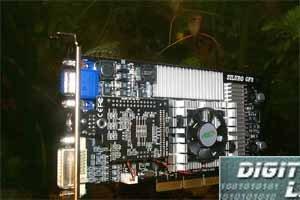 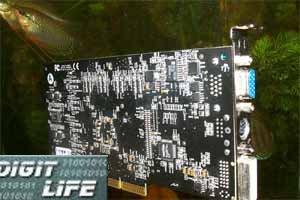 EliteMT produces memory chips with 3.8 ns access time, which corresponds to 260 (520) MHz. Like all other GPU GeForce3 cards, this one works at 200/230 (460) MHz. The memory modules are covered with standard heatsinks that is why it is impossible to look at them. You can see that the card is based on the reference sample from NVIDIA: 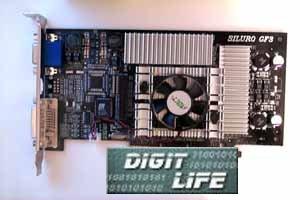  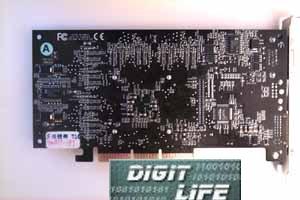  On the left you can see the ABIT Siluro GF3 VIO, and on the right is the reference NVIDIA GeForce3 (represented by the ELSA Gladiac 920). The difference consists only in a daughter card with the VIVO (ABIT Computer decided to replace the VIVO suffix with the VIO - Video In-Out). A similar card with a device for receipt and sampling of an analog signal and for displaying it on a TV could be seen on the GeForce3 card from Gainward. The Philips module of the 7100 series is in charge of a signal conversion (it incorporates both a DAC and ADC). On the one hand, such a universal processor makes such daughter cards cheaper and increases the production volumes of video cards equipped with VIVO; on the other hand, the experience of ASUS V8200 Deluxe, Gainward GeForce2 MX400, Gainward GeForce3 VIVO and MSI GeForce2 MX400 cards show that the copy protection integrated into the coder makes impossible recording of even an amateur video clip. Unfortunately, not only licensed video cassettes are copy protected by the Macrovision system - amateur clips are also often protected from sampling. When you try to play it the image trembles. And I don't know whether it is possible to fix the bugs on the drivers' level (the card ships with NVIDIA WDM drivers for video capture). 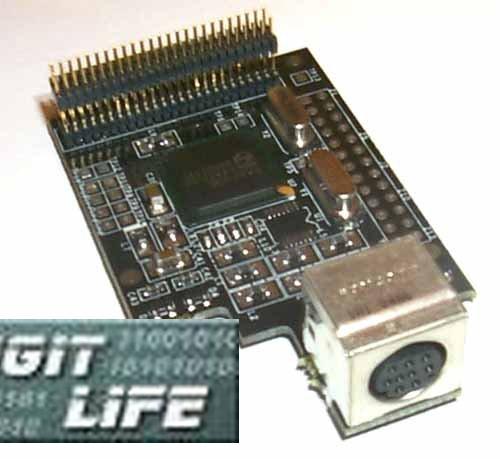 You can see that the daughter card has a connector for a splitter-adapter which ships with the card. The splitter has both S-Video connectors and RCA one. The card ships in a Retail package which includes (we, unfortunately, received a technological package):
OverclockingWith the additional cooling provided, the ABIT Siluro GF3 VIO (both cards) shows an excellent overclocking potential - 250/280 (560) MHz. Note:
Installation and driversTest system configuration:
Both systems were coupled with ViewSonic P810 (21"), NOKIA 447Xav (17") and ViewSonic P817 (21") monitors. During the tests we used NVIDIA drivers of v12.90, 14.61 and 21.81. VSync was off, the S3TC technology was enabled. For the comparative analyses we used the following cards:
Test resultsLet's start with 2D. This aspect of the GF3 video cards was discussed a lot; see, for example, the MSI GeForce3 VIVO cards review. The ABIT Siluro GF3 VIO performs excellently here. For estimation of 3D quality we used the following programs:
Remember that today we are testing the new 21.81 driver Detonator XP. Quake3 Arenademo002, standard modesThe tests were carried out in two modes: Fast (16-bit color) and High Quality (32-bit color). 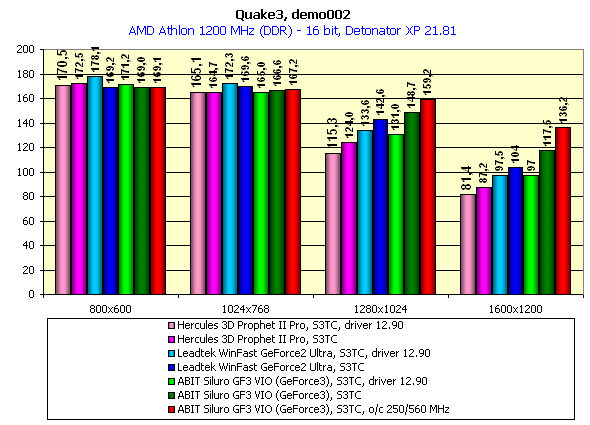 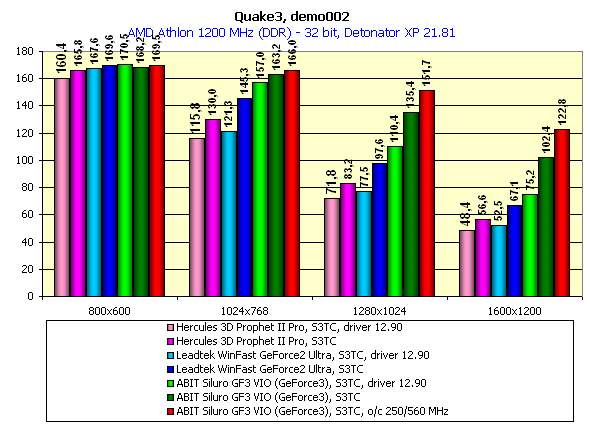 In all the tests the ABIT Siluro GF3 VIO doesn't fall behind its competitors. As for the Detonator XP is concerned, you can see that it boosts up the performance. And the GeForce3 card has gained the most from it. It is especially well noticeable in the 32 bit color. demo002, maximum settingsThe tests in demo002 were carried out at the highest level of detailing. 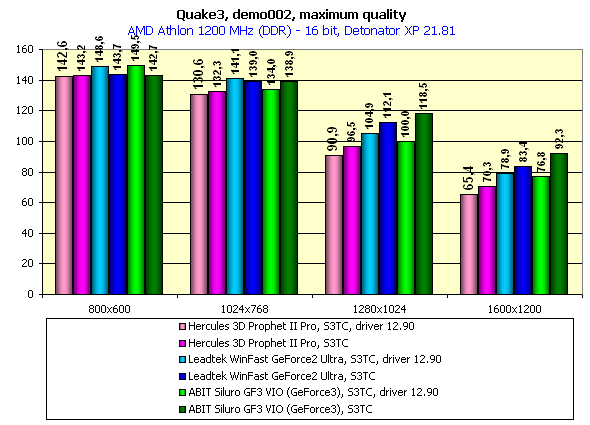 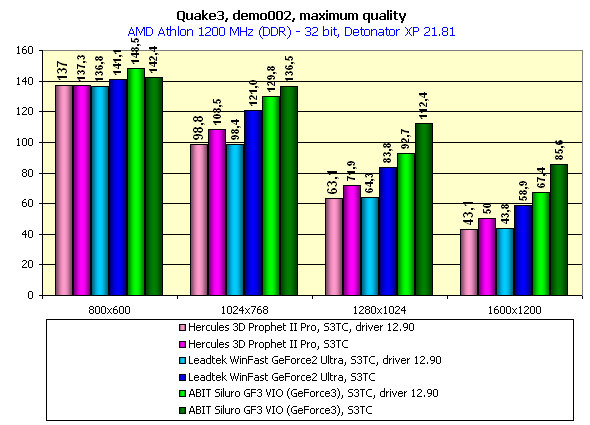 The situation is alike the previous one (except 1600X1200). And what's the speed gain of the GeForce3 percentage-wise? 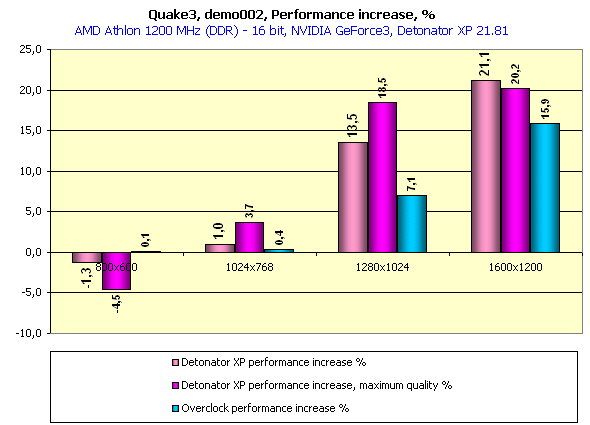 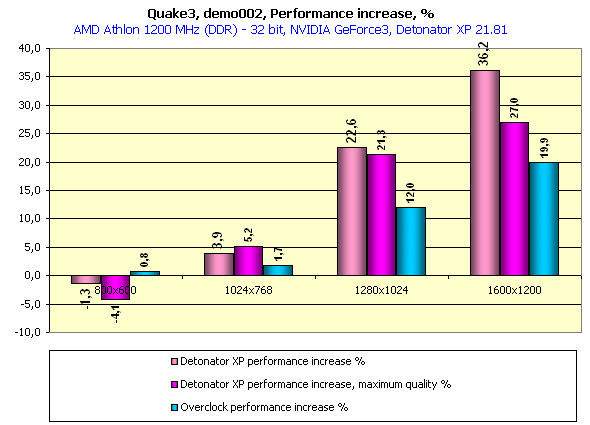 It is clear that the performance increases as the resolution grows. I have also overclocked the card to find out the performance gain in this case as well (from 200/460 to 250/560 MHz). Well, you see that the new Detonator is of a greater use than overclocking. The quality is not worse with the new Detonator either. Now let me enable anisotropy (note that the RivaTuner is the best way to do it). The anti-aliasing will be also activated (Quincunx mode). 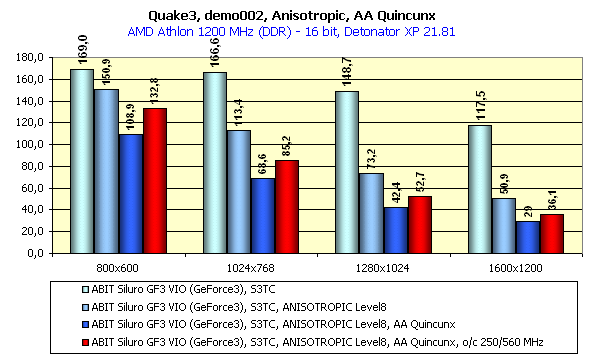 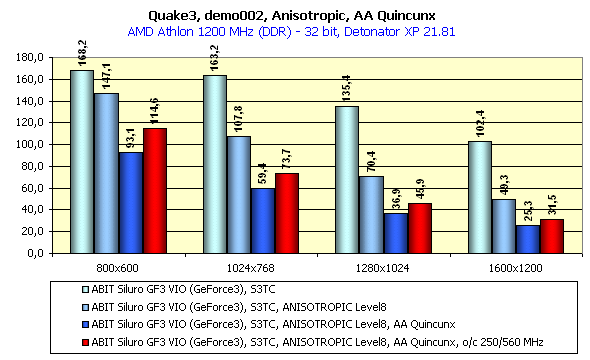 Of course, we didn't expect the performance drop to be less. But we are mostly interested in playability with the above functions enabled. And we can see that in 32-bit color it is fantastic in 800X600 (if the AA is enabled the greater resolution, as you know, is not required). In 1024X768 you can also play comfortably single games. GiantsThe tests were carried out at the highest quality. 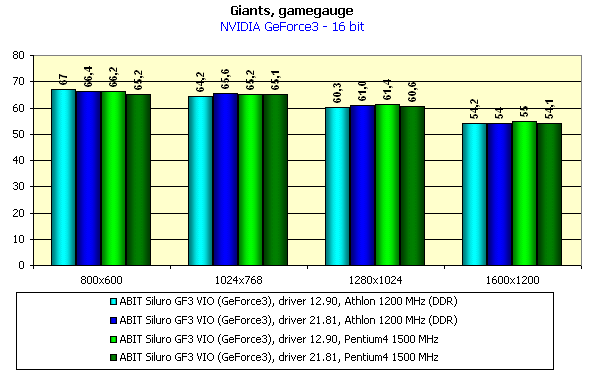  Neither the processor's nor the drivers' dependency are great here. It should be noted, though, that even at low resolutions the performance of the GeForce3 on the 1.2 GHz Athlon is almost equal to the one of the 1.5 GHz Pentium4. 3DMark2001The 3DMark2001 includes 3 game tests at different detailing levels and one more with pixel shaders enabled. They will help us estimate 3D quality. We used 16-bit textures in 16-bit color and 32-bit textures in the truecolor. Dual buffering enabled, 24bit Z-buffer, DirectX 8.0 Pure Hardware T&L, texture compression disabled. Game1 Low detail 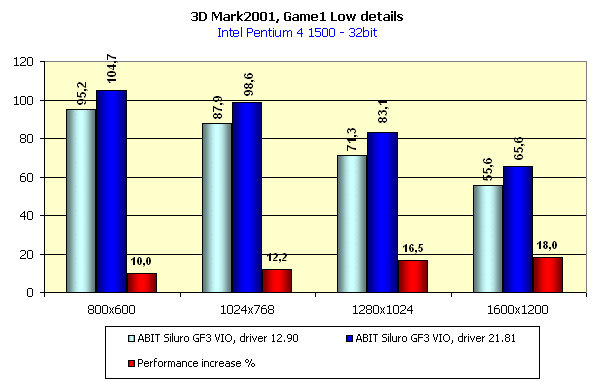 The performance increase is obtained, but it is not great. Let's take a look at the 3D quality. The screenshots received with the 14.61 drivers' version are on the left, ones obtained with the v21.81 are on the right. 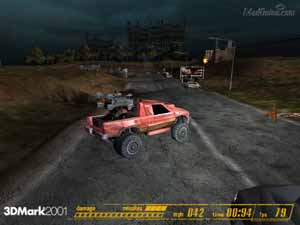  Well, the quality is at least not worse. Game1 High detail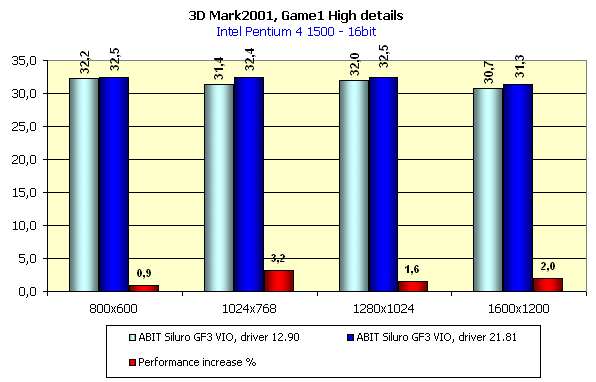 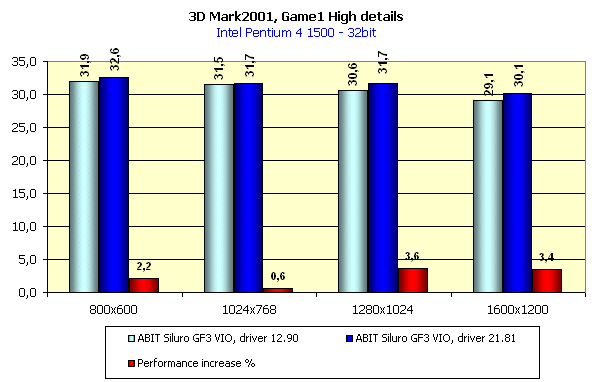 Here, the most load is taken by the processor, that is why replacement of the drivers doesn't affect the performance. Let's look at the quality. The screenshots received with the 14.61 drivers' version are on the left, ones obtained with the v21.81 are on the right. 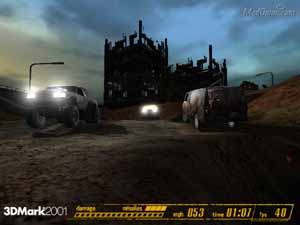 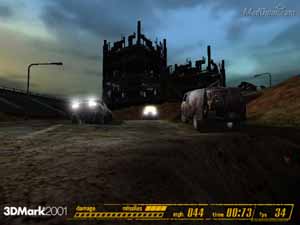   Again, no changes in the 3D quality. Game2 Low detail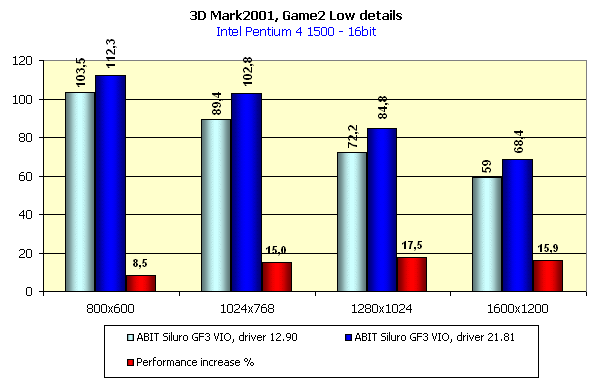 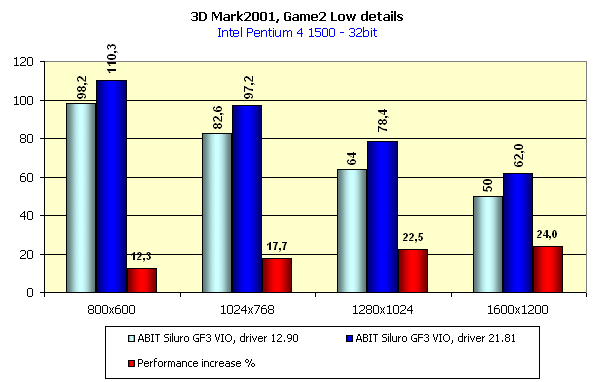 The performance raise is much better here. In 1600X1200X32 the performance has increased almost by 1/4. What about the quality? The screenshots received with the 14.61 drivers' version are on the left, ones obtained with the v21.81 are on the right. 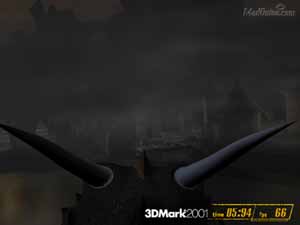 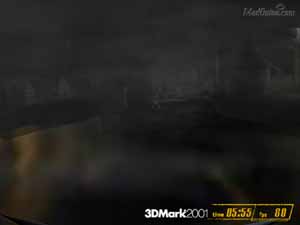 If you look very attentively, you might notice that the fog quality is poorer in the v21.81, but it is almost unnoticeable. Game2 High detail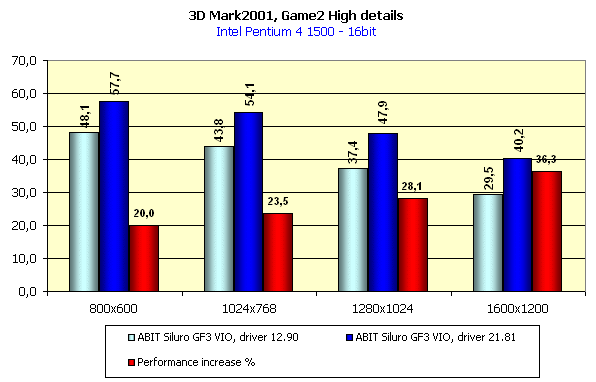 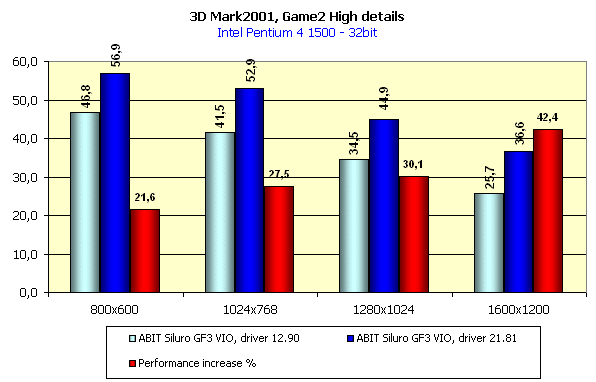 The performance increase is stunning! Well, the card keeps the trend of raising the speed as the resolution grows. The screenshots received with the 14.61 drivers' version are on the left, ones obtained with the v21.81 are on the right. 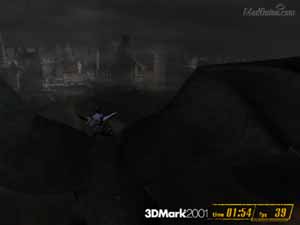 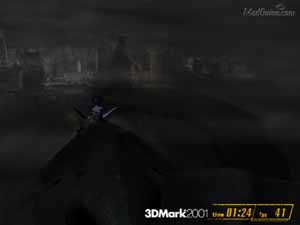  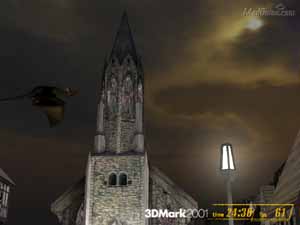 Well, I can't say the quality has become poorer. But it is again the fog which is just a bit worse. Game3 Low detail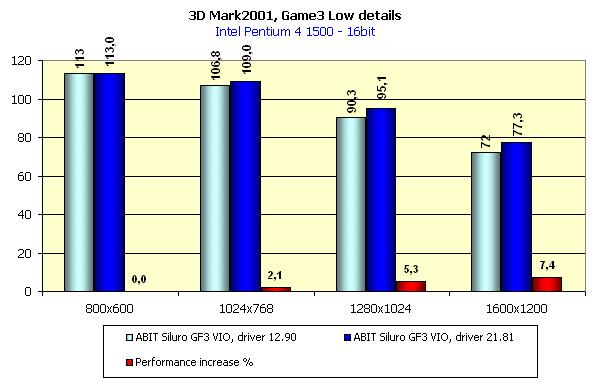 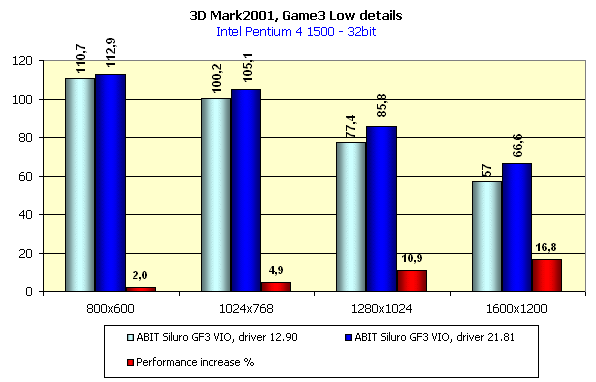 Despite the scene being rather easy, the performance has grown just a bit with the new drivers. The quality is as usual high: The screenshots received with the 14.61 drivers' version are on the left, ones obtained with the v21.81 are on the right. 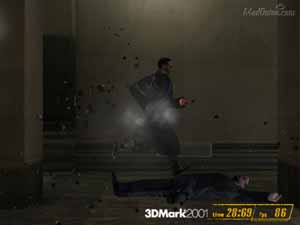 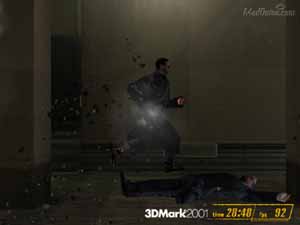 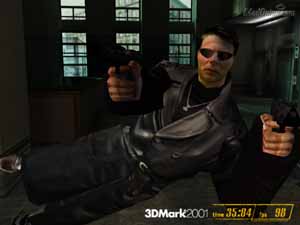 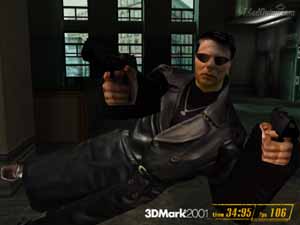 Game3 High detail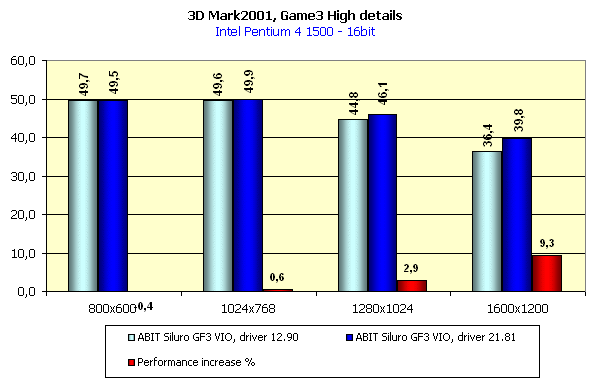 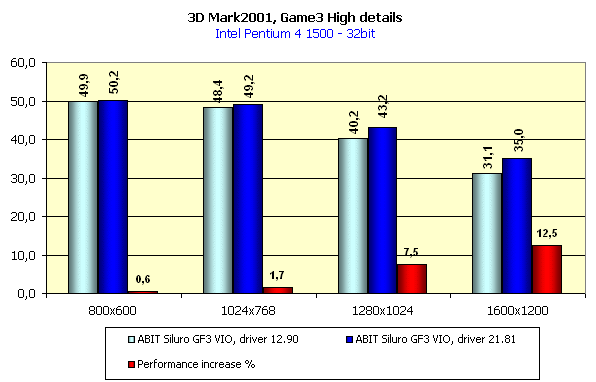 The situation is very similar to the previous one, when the performance growth is not great. The screenshots received with the 14.61 drivers' version are on the left, ones obtained with the v21.81 are on the right.  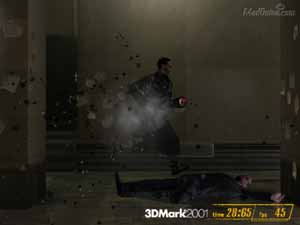 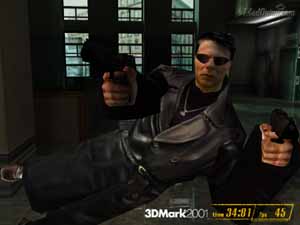  The quality doesn't rouse censure as well. By the way, the parameters of this scene are very similar to the ones of the Max Payne game. That is why I assume the performance won't improve much with the Detonator XP. Game4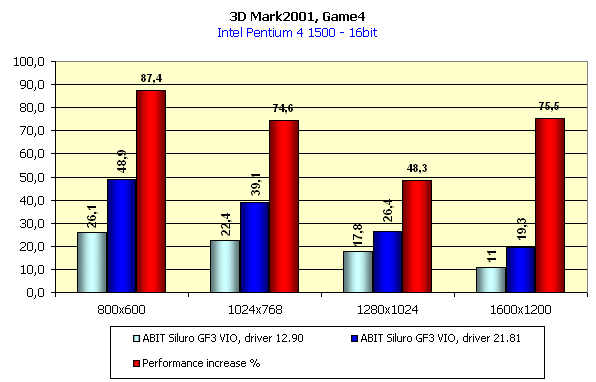 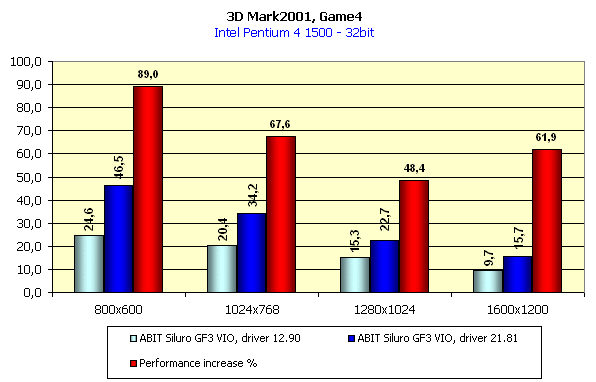 This the most beautiful and the most difficult test has demonstrated an excellent performance gain! If one makes a Single Player game based on this scene (where you mustn't chase others all the time), you will be able to play it quietly even in 1024X768! Think how beautiful it might be! The screenshots received with the 14.61 drivers' version are on the left, ones obtained with the v21.81 are on the right. 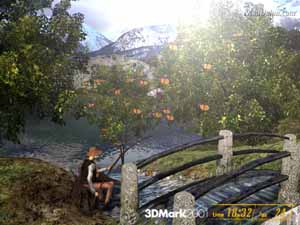 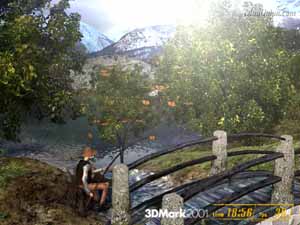 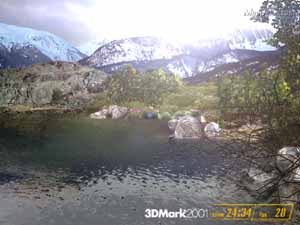 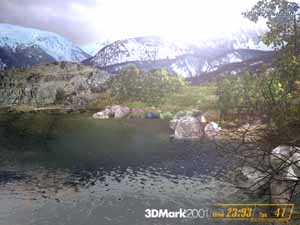  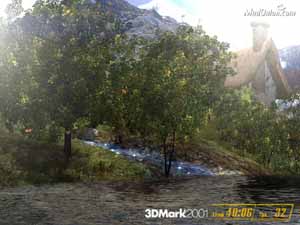 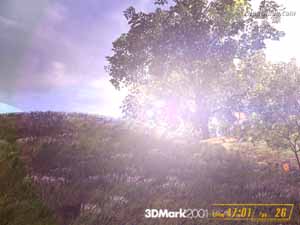 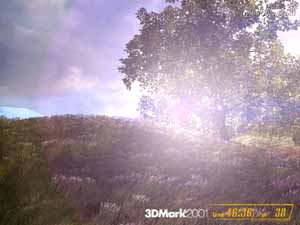 The 3D quality is just as high as before. In closing, I'd like to advise you to read also other reviews of GeForce3 based video cards. Besides, in our 3Digest you can find thorough information on the 3D performance of GeForce3 cards on different platforms. ConclusionThe ABIT Siluro GF3 VIO has demonstrated the performance of the High-End level. Since it follows the reference design, you shouldn't worry about its reliability. And its performance will be at least not worse than of its competitors. The new driver Detonator XP (v21.81) has also pleased us with some performance gain in a number of the tests. However, not all tests can show its power. The Seriuos Sam, for example, lacks for any speed growth. But you'd better see our September 3Digest. Now the fly in the ointment. It is impossible to adjust the anisotropy in the v21.81 drivers. There are also some bugs concerning frequencies. If you install the Detonator XP on a virgin OS or right after deinstallation of the previous drivers, the Coolbits won't let you see the card frequencies. If you install the new driver over the old one, then you will see them. There are also some other bugs that should be fixed. The Detonator XP is very attractive as far as GeForce3 cards are concerned. I can't, though, guarantee it will work flawlessly and reliably everywhere but we had it OK. Now the video card. This model shows that it is a real High-End product. Today a range of such cards is so wide, that the choice primarily depends on the price and accessories. So, it is for you to decide. The complete characteristics of video cards of this and other classes can be found in our 3Digest. Highs:
Lows:
Write a comment below. No registration needed!
|
Platform · Video · Multimedia · Mobile · Other || About us & Privacy policy · Twitter · Facebook Copyright © Byrds Research & Publishing, Ltd., 1997–2011. All rights reserved. |